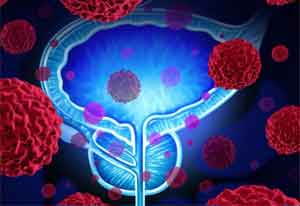EMBOLISATION OF PROSTATIC ARTEIRES FOR BENIGN PROSTATIC HYPERPLASIA
prof .DRRAM,HIV /AIDS,HEPATITIS ,SEX DISEASES & WEAKNESS expert,New Delhi,India, profdrram@gmail.com,+917838059592,+919832025033,ON WHATSAPP
Benign prostate hyperplasia (BPH) is a disease that affects over 15 million males in the U.S. and is characterized by smooth muscle proliferation in the prostate that can lead to lower urinary tract symptoms (LUTS), including urinary frequency, urgency (particularly at night) and incontinence which can have a significant impact on quality of life.
 Management of BPH has historically involved medications, lifestyle modifications, and regulating dietary and fluid intake and output. Those patients who are refractory to these treatments have been referred for transurethral resection of the prostate (TURP), which is currently the gold standard definitive treatment for BPH. However, this procedure does come with significant risks including bleeding and nerve damage potentially leading to impotence. As a result, alternative options have been explored, although a number of these new techniques have not been proven to be as effective as TURP.
Management of BPH has historically involved medications, lifestyle modifications, and regulating dietary and fluid intake and output. Those patients who are refractory to these treatments have been referred for transurethral resection of the prostate (TURP), which is currently the gold standard definitive treatment for BPH. However, this procedure does come with significant risks including bleeding and nerve damage potentially leading to impotence. As a result, alternative options have been explored, although a number of these new techniques have not been proven to be as effective as TURP.
NATIONAL INSTITUTE OF HEALTH & CARE EXCELLANCE 9NICE) has now recommended Prostate Artery Embolization (PAE) as treatment of BPH as suggested by NHS.The multidisciplinary Interventional Urology team both Interventional Radiologists and Urologists have studied and performed a highly effective and minimally invasive treatment for BPH called PAE (Prostate Artery Embolization).
PAE is a FDA approved minimally invasive technique that can be used as an alternative to TURP with less adverse effects and increased patient comfort. A tiny catheter is navigated into the arteries feeding the prostate gland from a pinhole in either the wrist or the groin artery and small gelatin particles are injected into these small arteries to decrease blood flow to the enlarged prostate gland.
The procedure can be done without overnight admission to the hospital and patients can go home the same day with very little discomfort. It cn be done under local anaesthesia too and donot have bleeding and infections problems as seen in open or endoscopic prostectomy .This innovative therapy involves new technologies, such as 3D navigation, microcatheters and state of the art x-ray imaging devices.
Even centres not equipped with 03 navigations but should have expert interventional radiologist and urologist to perform this new type of procedure to manage much common BPH
- Kidney stones universally present hazard in north india,dillution by water prevent it
- Steroid and placebo effect equally for mild persisting asthma with low sputum eosinophils
- Government wants to fix public healthcare staff shortages with ayush docs: will it work?
- Plea in hc for payment of salaries of edmc, north mcd teachers and doctors
- 7 indian pharma companies named in us lawsuit over inflating generic drug prices
- Woman in up dies after explosion in her mouth during treatment,what is diagnosis?
- Woman in up dies after explosion in her mouth during treatment,what is diagnosis?
- Woman in up dies after explosion in her mouth during treatment,what is diagnosis?
- Air pollution ! mothers organising rally in london,anaesthetist choosing gas,will india follow?
- Cardiac arrest is always not sudden as understood -a study

 Comments (
Comments ( Category (
Category ( Views (
Views (